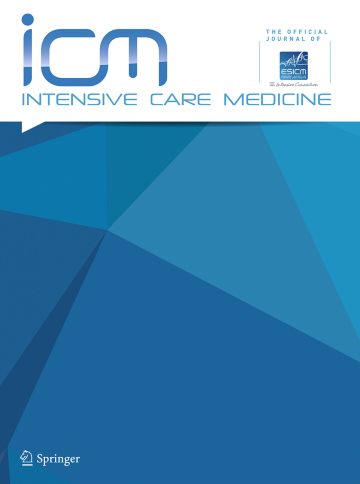Identifying distinct clusters of ICU survivors by integrating demographic, pre-admission quality of life, and clinical data: a large prospective cohort study.
IF 21.2
1区 医学
Q1 CRITICAL CARE MEDICINE
引用次数: 0
Abstract
PURPOSE ICU patients differ in pre-ICU health status, comorbidities, and diagnosis, forming a heterogeneous population with diverse long-term outcomes. This study explored whether clustering ICU patients by demographic, pre-admission quality of life, and clinical data, rather than by diagnosis, could identify subgroups that are more informative for patient-centered outcomes post-ICU. METHODS Data from the MONITOR-IC prospective cohort study were used. Demographic, pre-admission quality of life, and clinical data from 2361 adult ICU survivors of six hospitals were used to identify clusters, using the k-prototypes algorithm. Data from five additional hospitals (n = 866) were used for external validation. Self-reported physical, mental, and cognitive functioning, and quality of life one year post-ICU were described. RESULTS The four identified clusters differed significantly in long-term physical, mental, and cognitive functioning, and quality of life. Cluster-A (n = 204), characterized by a healthy pre-ICU status, high disease severity, low Glasgow Coma Scale, and long ICU stay, had a relatively high quality of life at one year, despite experiencing a mean decline from baseline. Cluster-B (n = 877), also a healthy group before admission but less severely ill at ICU admission, reported the best outcomes. Cluster-C (n = 632) included younger, mostly female patients with moderate impairments both pre- and one-year post-ICU. Cluster-D (n = 648), characterized by a low education level and poor baseline health, reported impaired outcomes one year post-ICU, although improved compared to their pre-admission status. External validation confirmed the generalizability of these results. CONCLUSION This study identified and externally validated four distinct clusters of ICU patients by integrating both clinical and non-clinical data. These clusters, which differed in long-term physical, mental, and cognitive outcomes, challenge conventional disease-based classification, and support a multidimensional approach to define subgroups of ICU patients. TRIAL REGISTRATION The MONITOR-IC study was registered at ClinicalTrials.gov: NCT03246334.通过整合人口统计学、入院前生活质量和临床数据来确定ICU幸存者的不同群体:一项大型前瞻性队列研究。
目的icu患者在icu前健康状况、合并症和诊断方面存在差异,形成了具有不同长期预后的异质人群。本研究探讨了通过人口统计学、入院前生活质量和临床数据(而不是诊断)对ICU患者进行聚类,是否可以确定对ICU后以患者为中心的结局更有信息的亚组。方法采用MONITOR-IC前瞻性队列研究数据。使用k-原型算法,使用6家医院2361名成年ICU幸存者的人口统计学、入院前生活质量和临床数据来识别聚类。另外5家医院(n = 866)的数据用于外部验证。描述自我报告的身体、心理和认知功能以及icu后一年的生活质量。结果四组患者在长期身体、心理、认知功能和生活质量方面存在显著差异。a组(n = 204)的特点是ICU前状态健康,疾病严重程度高,格拉斯哥昏迷评分低,ICU住院时间长,尽管经历了平均基线下降,但一年时的生活质量相对较高。b组(n = 877)在入院前也是健康组,但在ICU入院时病情较轻,报告了最好的结果。c组(n = 632)包括较年轻的女性患者,在icu前和icu后一年均有中度损伤。d组(n = 648)的特点是受教育程度低,基线健康状况差,他们在icu后一年的预后受损,尽管与入院前相比有所改善。外部验证证实了这些结果的普遍性。结论本研究通过整合临床和非临床数据,识别并外部验证了四种不同的ICU患者群。这些分组在长期的身体、精神和认知结果上存在差异,对传统的基于疾病的分类提出了挑战,并支持了一种多维方法来定义ICU患者亚组。MONITOR-IC研究已在ClinicalTrials.gov注册:NCT03246334。
本文章由计算机程序翻译,如有差异,请以英文原文为准。
求助全文
约1分钟内获得全文
求助全文
来源期刊

Intensive Care Medicine
医学-危重病医学
CiteScore
51.50
自引率
2.80%
发文量
326
审稿时长
1 months
期刊介绍:
Intensive Care Medicine is the premier publication platform fostering the communication and exchange of cutting-edge research and ideas within the field of intensive care medicine on a comprehensive scale. Catering to professionals involved in intensive medical care, including intensivists, medical specialists, nurses, and other healthcare professionals, ICM stands as the official journal of The European Society of Intensive Care Medicine. ICM is dedicated to advancing the understanding and practice of intensive care medicine among professionals in Europe and beyond. The journal provides a robust platform for disseminating current research findings and innovative ideas in intensive care medicine. Content published in Intensive Care Medicine encompasses a wide range, including review articles, original research papers, letters, reviews, debates, and more.
 求助内容:
求助内容: 应助结果提醒方式:
应助结果提醒方式:


